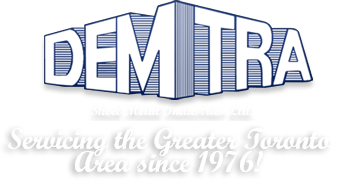Metal Fabrication - Toronto
Dramatic Results with the Combination of Manual Welding and Robotics
In metal fabrication Toronto, the process of assembly wherein the metal parts are joined together is called welding. Most of the welding done today falls under two categories, arc welding and torch welding. Arc welding requires an electric arc and a filler material (or commonly called as the welding rod) to join metal parts together. Feeding the filler material into the welding joint requires steady hands and good eye for detail since as the rod melts the welder must continuously feed filler material to the joint using steady back-and-forth motions. Torch welding is another popular welding process using an oxyacetylene torch to melt the working material and welding rod. Torch welding is more frequently used for repair and maintenance including the process of building sculptures.
Welding as an industry
There is never a dearth for welding jobs not only in metal fabrication Toronto shops - but manufacturing companies. In spite of the innovations brought about by modern technology in metal fabrication and welding, most of the welding processes are not automated since industries still require the expertise and skills of a human welder. From the automobile industry, ship building, commercial applications and construction of bridges, the need for welders goes on and on. Previously, the quality of a weld was highly dependent upon the expertise of the welder but now, sound welds are being produced without any human intervention. Automation has reduced the necessity for humans to be involved in production since equipment is programmed at perform a unique task. The function and steps of are executed or controlled in sequence through mechanical or electronic devices that replace human’s efforts and decision making. However, there is also such as thing called partial automation where some functions are controlled by a computer and some steps are performed manually.
Use of robotics in the welding industry
It is a known fact that the use of robotics in industries speeds up the job and reduces the safety issues on humans. In many aspects, robotics increase productivity and quality and it is considered as an alternative technique for production however, it remains important for industries to understand the many features related to welding before they make an investment on robotics. In robotic and automated welding, the job of the welder is to inspect the quality of the weld and guarantee that there are no issues with the process. Should any problems occur during the automated welding process, programming and maintenance are done to fix the problems.
The main condition for a welding equipment to be robotic is that it should be programmable before robots are designated to perform specific tasks. For example, a robot developed to weld on pipelines will have limited movements that will revolve around the pipes until the program is stopped. The real challenge is the development of a robot for welding of pipes that can better comply with work requirements. When robotics and the expertise of human welders join together in metal fabrication, Toronto and other areas, the results can be dramatic improvements in quality, better repeatability, faster production time, less downtime and eventually an increase in profits.





